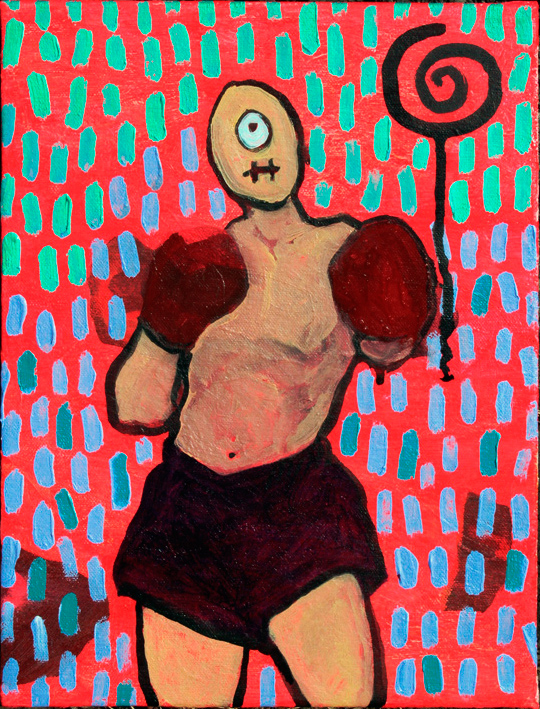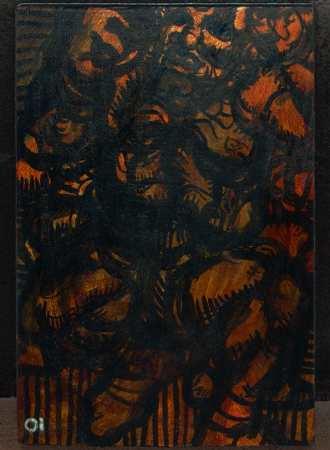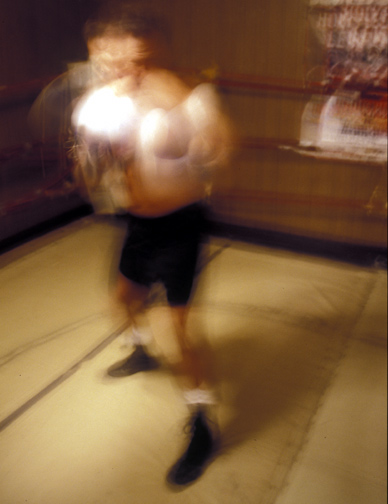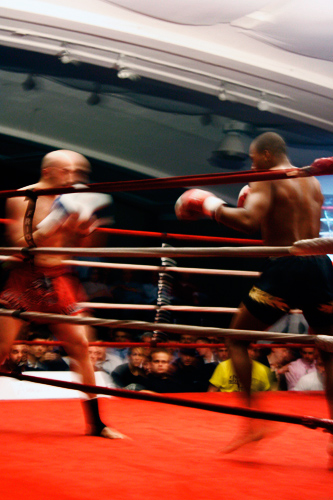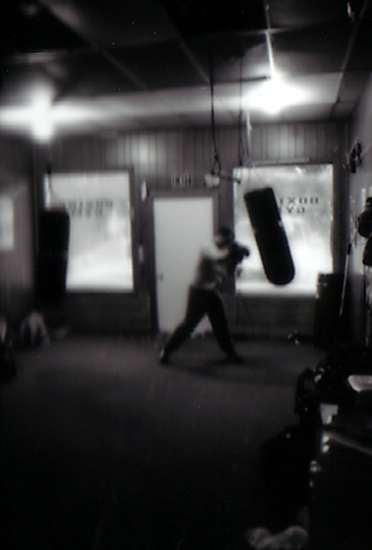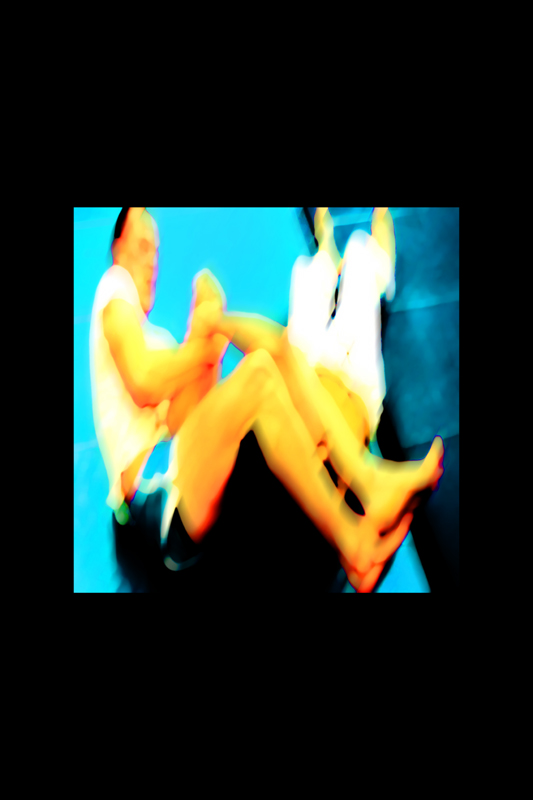[Fig. 1. The Boxer at Rest, from the Museo Nazionale Romano-Palazzo Massimo alle Terme, on view in Gallery 153] - Caption from the Met website; click image to read Sean Hemingway's article on the Boxer.
Part 1
For six weeks in June and July, the Metropolitan Museum exhibited one of the world's great sculptures, known as "The Boxer at Rest." The Met display was stunningly poor in execution, a logistical clusterf*ck. The viewers and sculpture were squished into a hallway transiting to and near the museum's entrance hall. A bit of twine cordoned the Boxer from the crowds, who leaned across the barrier to photograph details on the sculpture. The day I chose to see the Boxer was the next to last one for the exposition of it, a weekend day, and the press of the masses was steady. An illustrated wall of text attended the installation. The crowd would separate into art viewers and art text readers. The readers would shuffle into position to scan the story of the Boxer, with their backs to the sculpture and the viewers trying to take it in. A lot of rubbing happened. It's New York City, so the people in the scrum were diverse, multinational, possessing a wide range of "personal space" sensitivities. The academics, the art historians, the lay authorities were very serious about obtaining proper location for their inspection of the masterpiece. They navigated the mosh with mask-like facial expressions, denoting various types of professional interest, with palpable intensity, to the extent that one noticed in their faces the working of muscles, darting eye-glares, and furled eyebrows, sometimes juxtaposed with inset "polite" smiles, approaching the grimace. The photographers, most of whom were using to crap mobile phone cameras to videotape or shoot still images of the Boxer. Keep in mind that the Boxer is completely documented. Its surface topology has been thoroughly mapped. At any rate, these people (of both genders) were very adamant about obtaining correct angles for their pictures. Some of the more accomplished among them intermittently adjusted the settings on their devices and inspected results, as simple viewers strained peer around and over them at the Boxer. A fair amount of self-consciousness infused the scenario. The desire to be polite was apparent often. That odd projection common under the right conditions in NYC art circles - of stressing the value of the art on view without explicitly preaching the virtue of it, utilizing body language, sighs, even groans, to convey reverence for the cultural phenomenon of undeniable greatness - was evidenced by some, mostly elderly or middle-aged viewers. The crowds turned over at a great pace, adding to the messiness of the experience. It truly was a NYC-affected presentation. Some museum guests on their way to somewhere else attempted to blast through the troops gathered around the sculpture. One such mover I heard exclaim to a fellow traveler struggling to keep pace with the exclamant's brisk stomp, "This is the greatest bronze in the world!" Their speed never diminished, and the recipient of the infoshare barely had a moment to glance in rearview over his shoulder as he passed. It was a dangerous move. He could easily have crushed a small child or lady. I didn't notice many fighters in the gathering and ungathering artsy mobs. I did notice that one area that resisted the coagulating masses, was the Boxer's rear. For whatever reason, people did not tend to linger on that end of the sculpture.
If my introduction reads as overly snarky, I apologize. I should convey my gratitude to the Met and its institutional exchange partners for affording us here the opportunity to see the Boxer. A raft of logistical difficulties have to be overcome to make the Boxer viewing happen. By any scale and estimation transcontinental exchanges are heroic, and such operations are costly, and in these uncertain times, not absent many kinds of danger. Hurrah the dedication of all who helped actualize the presentation. My annoyance arises from a sense of lost opportunity, because this sculpture could have precipitated a terrific 4-dimensional exhibition, of the Cybridic variety, as Joseph Nechvatal describes it, and it did not.
To expand, the medium for art currently is more a complex or matrix than a material, a networked phenomenon that has both virtual and actual elements, compounded by the ubiquitous crowd-sourced tools of documentation and commentary, the experiential quality of the encounter with the original object, the presence of history and its simultaneous dissolution and other factors and contingencies. The potent sensory richness possible in the presentation of a major artifact is the issue. A significant object can be shared today as a constellation with itself as a point of origin, albeit a compound one, a gumbo of mashed-up orders and hierarchies, a concatenation of registers, a swelling or burgeoning of databases in real time and other times-as-simultaneity, an exponentially dispersing all-directional irruption, made recursive by the individual "viewer" happening upon the Thing in a collective context, etc. Or so the logic of networked artwork goes.
Actually, there's more to the picture, and the Thing is four-dimensional. Building on 3D protocols (such as those applied and preserved in Don Judd's Marfa compounds), the 4D methodologies for situating the happening are far more effective than the antiquated plop-art regimens, or the cacophonous abrogation of techne via anarchic modes of display as spectacle. It is possible to integrate proven exposition practices, which serve object display well, with a range of other presentation, amplification and contextualization devices to build a comprehensive array of multimedia nodes that operate expansively with the object as a point of origin. 4D tools were barely applied in this case, and the results are disappointing. Based on comments by viewers in the sample I gathered during my viewing, non-pros and art veterans alike were nonplussed by the Boxer's treatment. People are ready for the 4D treatment, even though they don't realize that's what they want (yet). Interactivity is only one - but an important one - facet of 4D production, and pretty much any presentation can be fashioned to optimize it. Another 4D facet is context (con-text), and the Boxer install is a great example of how not to do it. A third is optimizing movement around objects in a presentation, or at least making movement rational and safe. Didn't happen here.
Okay, but I wouldn't change anything about what happened the day I went to see the Boxer at Rest. I learned a lot from all the errors. Thanks! Sure, smart boy, the museum admins among you might shout, How would you have done it? Well, I think I would have used diorama-building, holography and 3- + 4D projection mapping to recreate the scene below. Maybe toggle this with a cinematic recreation of the imagined historic scene the Boxer at Rest might have been a part of. There is speculation about what the sculpture was "for." Maybe we could present several conjectures. What do you think? I wouldn't stop there, but I will here...
But let me clarify. I am not suggesting that the actual object receive treatments like those I described above. Those scenes could be accomplished virtually, or produced using copies of the original, in seconary spaces. I would recommend a grand hall for the boxer installation, not a concourse, a dedicated gallery ample enough to contain the crowds desirous of witnessing the real thing firsthand. The contextual stuff would appear as additive elements in the presentation, experiential enhancers, as it were. I don't advocate for appropriating the object to precipitate a speculative spectacle.
Another reference I would like to introduce here is an interview with David Joselit that appeared in the Brooklyn Rail concurrent to the Boxer exhibition at the Met. It is important to realize that the critical is wrestling with 4D, as an analytic problem, a circumstantial concern, and failing to acknowledge the vitality of art itself in the meantime. Certainly this is nothing new. Thinkers and artists have been at odds for millennia, at least since the Republic. Why should anyone be surprised that thinkers still tend to discuss art in the mannerisms of extraction and exploitation, spinning the object into subject to prioritize the discourse, and minimizing the tradition and its craft techniques, as an outmoded practice of formal representation of the real(-ism), in the process(-ing). Thoughts seem to inspire conflict with what is, what is Truth, and so on. Always, the object is verging on either obsolescence or obscenity, some age-imposed lost utility and/or transgressive quality of offense to the rationale of idea-managed value(s) and/or mean(ing)s. There is much keen and relevant field analysis in Joselit's thinking, as evidenced in the following passage:
What is the status of an apparatus? I end the book [After Art] stating that the art world is in fact an apparatus that artists, and critics for that matter, should use. But I prefer the term “format.” It suggests, through its allusion to a kind of digital object, that content can be reformatted. Content is not the most important part of an art practice, but rather the qualities of its formatting.
The format moves from the level of medium to the level of the globe, which is almost impossible to conceptualize, moving through all these various kinds of material, layers, or strata. Our conception of art has to take in this entire scope. Here is where Latour becomes very important. Instead of thinking about these things as giant entities, which is overwhelming and impossible, he thinks about material connections—passages between these different scales, moments of linkage. That’s where I think art practices, even on a very formal level, can make these sorts of crazy links between scales visible. And what we have to admit, and really carefully consider, is that the artist is not necessarily a disempowered actor in this apparatus known as the art world.
[Boxer at Rest (left) and Fig. 5. detail (right), Greek, Hellenistic period, late 4th–2nd century B.C., bronze with copper inlays. Museo Nazionale Romano - Palazzo Massimo alle Terme, inv. 1055. Lent by the Republic of Italy, 2013. Image courtsey Vanni/Art Resource, NY] - Caption, ibid. Click image to go to the article at thecultureconcept.com.
However, the critical diminishment of the Thing, and there are numerous means by which the art object is disenfranchised through the epistemological lens, amounts to an evasion of each object's inherent nature and features. Essentially, each artwork is created in relation to a human or human collective. Recent trends of the modern and contemporary and post- eras engage in some extensive restructuring of the parameters of conception to reorder art within a critical architecture, to prioritize the theory over the art, to subject the object to protocols alien to it, to empower the language-based idiom to dominate the Thing. It isn't that an artist cannot approach the task of creating with reason. Obviously, this is not true. It's as though the episteme must feel compelled to upend the terms of the memorial, the specific facts of representation as a type of reportage, as they pertain to what is made to be seen, and the communication of experience beyond the contemporary. Art is capable of implementing Time into a material instance in ways that the thinker and the writer cannot. A thinker and writer can do the same with the immaterial, in ways the artist cannot. The two or several disciplines can and should be complementary, but both or all fail when framed as hierarchical choices, binaries and either/or propositions.
Art presents an opportunity to start conversations. Who was this boxer, who was the sculptor, what is the narrative attached to The Boxer at Rest at inception, what are the details riven into the surface about? The Boxer's creator is anonymous. That information vacuum alone should be enough to inspire at least a modicum of consideration of the Boxer in its dimensionality, as a time-relative, object-instance. How would the artist who created the Boxer, to reframe Joselit, "reformat" the Met to provide an ample architecture for the sculpture, now. One of the problems common to reformations is the erasure, or at least displacement, of the original, as such, as itself, for itself as a complete or autonomous thing, a state of existence lacking but not wanting any re-contextualization. Art can be a call to remember. Reformations are reactionary, but they are also prone to denial or distortion or reconstitution of origin. Further, reformation even in its derivative iterations is a colonial form, a feature of empire. When the reformatting of art occurs, especially when it occurs to serve any ideological contraption, it is likely that the original will be harmed or deformed in the process. The art-impetus shifts from conservation or preservation to some other concern, such as interpretation or deconstruction.
"Boxer" arcade game at Our Lady of Mount Carmel festival, an annual Italian heritage celebration. (Photo by Paul McLean, 2013)
The exhibition of the Boxer at Rest presented a great opportunity to examine and explore a key feature of humanity, one that doesn't necessarily conform to manageable or pleasant social reflections. We fight, we make fighting a game, a business and a rite of passage. We brag about our fights, especially when we overcome our opponent. The Boxer, at rest or not, is a subject with tremendous resonance. The fight-game the Boxer at Rest played was not an metaphorical one. The scars, the cauliflower ears, the mashed-up face, the gear, the securing of his genitals, all point to bloodsport. Maybe this is why there was so little critical commentary in the art press based in NYC, on the occasion of this masterwork exhibit. Sure, Jerry Saltz penned an excited but thin piece, with some cheap digital effects in the online version, amounting to a pretense of afforded attention. But why didn't more of the great reviewers here devote some time to the Boxer? It is after all, one of the greatest bronzes of all time. I have my opinions. One is that a sculpture like this one makes most of sh*t (like Koons' and Hirsts') in the 1% art market look like the sh*t it is.
∞
The formalization or ritualization of personal combat is common amongst societies. The evaluation of this kind of fighting is of interest, itself. If ritualized combat is so human, what impulse would drive one to "study" it, to Other-ize it? I raise this question, because it pertains to art, as well. This artwork resists anthropology, psychology, sociology and culture studies. The Boxer doesn't require visual literacy. Its presence is not incidental, and spans the parameters of race, space and time. The endurance of the bronze conveys another fact contraverting arguments for de-skilling, for obviating craft as an obvious asset in the creation of art, for de-materializing it, for poo-pooing technology besides networked electronic kinds. The new media, propped up by the abstract notions of fungible art as mutable and global social currency, do not satisfy the potential power of art, as well as bronze art does, or at least as well as this bronze does. LOL. The Boxer is better than any f*cking Tumblr. To suggest a Tumblr is art, and that the Boxer is art, is to say they are comparable, or categorical, or identical. They are not. Everything is not art. We don't know what the Boxer was used for. Maybe it isn't even Kantian art. Fair enough. Most importantly, this sculpture forces an evaluation of what art is and can be, or it should. That didn't happen in the NYC-based art writing domain. Why?
Part 2
...More thoughts on art and fighters...
I visited the Met not long ago to see the George Bellows exhibit. My initial interest was in the artist's famous boxing paintings, but I discovered much more in Bellows' work to celebrate. The Hoppner above is in the museum's collection. The subject of fighting would make a great survey, no? Could we not add footage of fights, of all kinds, fight paintings and sculptures from many cultures, costumes, and so on? Wouldn't that make a great show?
"Dempsey and Firpo" by George Bellows
Why are people attracted to blood-sport, to wargames, to combat as spectacle, to the ritualization or celebration of battle? Crevald essentially wonders the same thing at the conclusion of his book on the subject.
We live in an age of endless war [on Terror, on Drugs, on Poverty, etc.] During the W. Bush-driven invasion of Iraq, the media presented war as a virtual spectacle, via embedded reporters. I often thought at the time of A History Maker by Alisdair Gray, and the James Caan-starring version of Rollerball. It's worth reviewing Baudrillard and Eisenhower's war-propositions, to get at what's happening now. Revelations about NSA programs for spying on Americans - indeed, everyone connected via networked electronic devices - indicate that the management methods for requiring complicity of people (most of whom have no direct causal role) in the apparatus for propagation of war and its various associated enterprises are approaching levels of total consumption. It is a time of the absolute: absolute secrecy, war, extraction and exploitation capitalism, and command-control complexes. It is also a time of astonishing disconnects between truth and lie. President Obama, who has proven to be a great global manager of the absolutes listed above, is a Nobel Peace Prize recipient. I wish Baudrillard could comment, but am happy for him that he missed this spectacle of simulation.
Another phenomenon I would consider to be pertinent is the emergence of mixed martial arts as one of the world's most popular spectator sports, especially in the domain (arena) of corporatized commodity media and/or "content." The UFC in its evolution is a great and rich story, on its own terms. When the Octagon and the Pentagon versions of systematized violence are juxtaposed, a compelling inquiry can be explored progressively, in many directions. Both phenomena, Endless Imperial Global War-on-[insert adjective or abstract or generic noun here] and the stylized, spectacular neo-gladiator of hand-to-hand (& foot, knee, elbow, etc) MMA, belong in a single category of human activity. Martial arts is the set, and it embraces technology, communication, an array of interpretive arts, theory, philosophy and more. War is supposedly the Real version, and the updated ring-sport the Game or Play. Today, the border separating the Real from the Game or Play are blurred, and we can begin to perceive the enterprise of Mankind in Combat in its dimensionality, as a matrix or complex of ideas, actions, history, representations, tools, sciences, computations, categorizations and more. Indeed, we can admit that war is human, as far as we know. Accepting this as a premise yields much, whether the actuality of the statement "war is human" is any more true than one like "to err is human." In a binary language the antonym of war is of course peace, and peace as an antonym is certainly an oxymoron. It should be obvious the 4D inquiry is not as such conclusive. The analysis is never presumed to be whole, since that would posit analytic omniscience, and who can boast of that?
Anyway, the Fighter at Rest evokes much that is absolutely true about fighters and fighting, and great art. I am adding a sampler of fighter-art I've made:
Art in relation to fighting is a subject worth investigating via 4D analysis. I am skipping many associative steps and contingent occurrences leading to a "find" (a reminder: dimensional analysis is based on the N + 1 formation described in Sirato's manifesto, and thus an additive, even sculptural, methodology), but here wish to insert an excerpt of a David Reed article for art journal (Winter 2010 issue) titled "Soul Beating:"
If it wasn’t just a shift to figuration, what did Guston mean by the tragic? My other favorite teacher at the Studio School in those years was Resnick. He told me about a phrase used by his painter colleagues that can perhaps explain further what Guston meant. It was a phrase that Resnick used to describe the method and difficulties of an artist changing his or her work: “soul-beating.” He said that some artists could “beat their own souls,” but some could not, and needed someone else to do the beating for them, a friend or an enemy. If I understand correctly, I think that by soul Milton meant all the traditions and beliefs from the past that affect our thinking. For Resnick, spirit was the opposite of and had nothing to do with soul. As an artist, one had to learn to be critical of one’s beliefs and the traditions that one cared so much about, had to learn to push on from those beliefs into something else.
Guston, at the time he spoke with us, was trying to do this for himself, to change himself. He was exceptionally open both in his critique and later in the seminar. Unsure of himself and what he was doing, he was never acting a part, though his resemblance to a character from a Fellini film told me that putting on a show would have been easy for him. In the Studio School style, Guston saw the traditions that he was trying to beat from his soul. I think that this is why Piero’s Flagellation came to his mind and why it was so moving for him to speak about that painting. It was an image of his own current soul-beating. Thinking about this now, I see his Ku Klux Klan hoods with their whips in a new way. These are soul-beater artists at work: the tragic in operation. Guston implicates himself in the evildoings of the KKK hoods. Berkson reminded us that “the image is adapted as well from seeing Piero’s members of the confraternity the Miseri-cordia, who wore their hoods—black where the Klan’s are white—to keep their identities secret, but out of charity and self-effacement rather than hatred and fear.”[5] Many other images in Guston’s paintings could be related to soul-beating: the nails, the clubs, and the bricks and stones, which are like the stone St. Jerome used to beat himself in the desert. I especially like the paintings in which all the objects are swept away by floods of blood. But I should be clear: I mean that these are objects of soul-beating in an artistic sense only, without the usual iconographic, religious meanings—they are images of how a painter can use painting to change him- or herself. The books in Guston’s paintings are also tools for this soul-beating. In the critique he recommended that we read Roberto Longhi on Piero, Osvald Siren on Chinese aesthetics and philosophy, Charles Baudelaire’s writing, and Eugène Delacroix’s journals.
Guston ("Bad Habits")
I would suggest that the artist and War and/or Fighting fundamentally and profoundly diverges from the other kinds, although the Game type of war/fighting is somehow sharing qualities, has affinities with art as expressed through painting and sculpture. Art and War by Laura Brandon is a good reference here, and points to a burgeoning recognition of the complex dynamics that tie art and collective combat to the definitive human. A similar text about art and fighting would be helpful. Hopefully, the author of that text would comprehend the concept or phenomenon among artists of "soul-beating." I would argue that overarching relations of artist to spirit to art is where the force driving the expressive organism we're confronting lives. I would further the dimensional discourse by asking the analyst to wonder about whether art and war are symptoms of humanity or vice versa. Actually, this is kind of trick, because I don't at all believe that the situating the questions in a context of self-analysis can lead to valid or even viable answers.

![[Fig. 1. The Boxer at Rest, from the Museo Nazionale Romano-Palazzo Massimo alle Terme, on view in Gallery 153] - Caption from the Met website; click image to read Sean Hemingway's article on the Boxer.](https://images.squarespace-cdn.com/content/v1/501abbd4c4aaab20160f16af/1374935323986-OVINPZY5FCAVVTHIYEIF/boxer1.jpg)
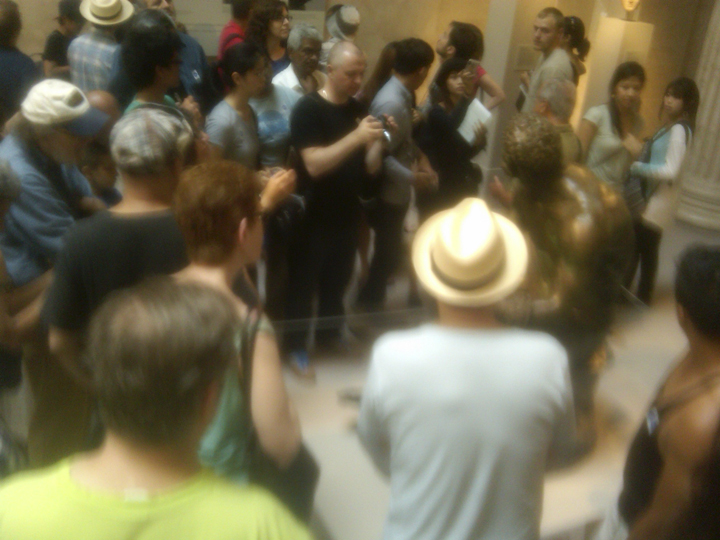

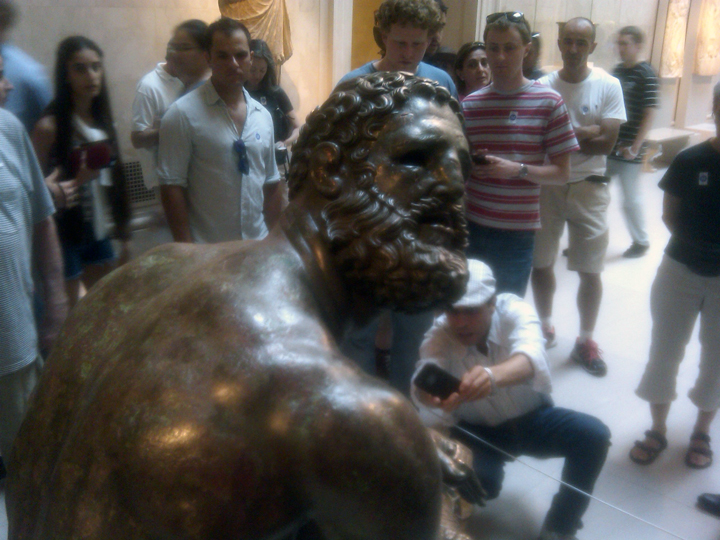
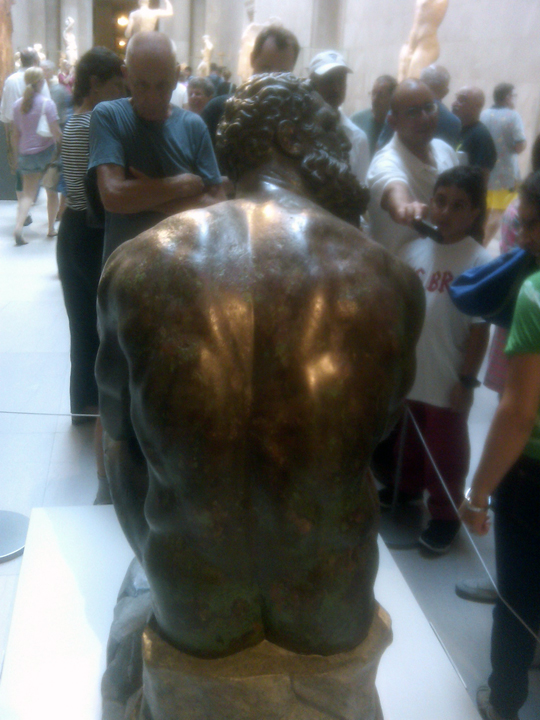
![[The Bronze statue Boxer at Rest at time of discovery in 1885 on the south slope of the Quirinal Hill in Rome.] - Caption, ibid. Click on the image to read the Met exhibit summary.](https://images.squarespace-cdn.com/content/v1/501abbd4c4aaab20160f16af/1374938209132-H8DVJIZVNRNZQAAABLDH/boxer2.jpg)


![[Richard Humphreys, the Boxer by John Hoppner (British, London 1758–1810 London)] - Met collection](https://images.squarespace-cdn.com/content/v1/501abbd4c4aaab20160f16af/1374970775573-63WH1KU6N37394BZPJ8G/Hoppner-boxer.jpg)



